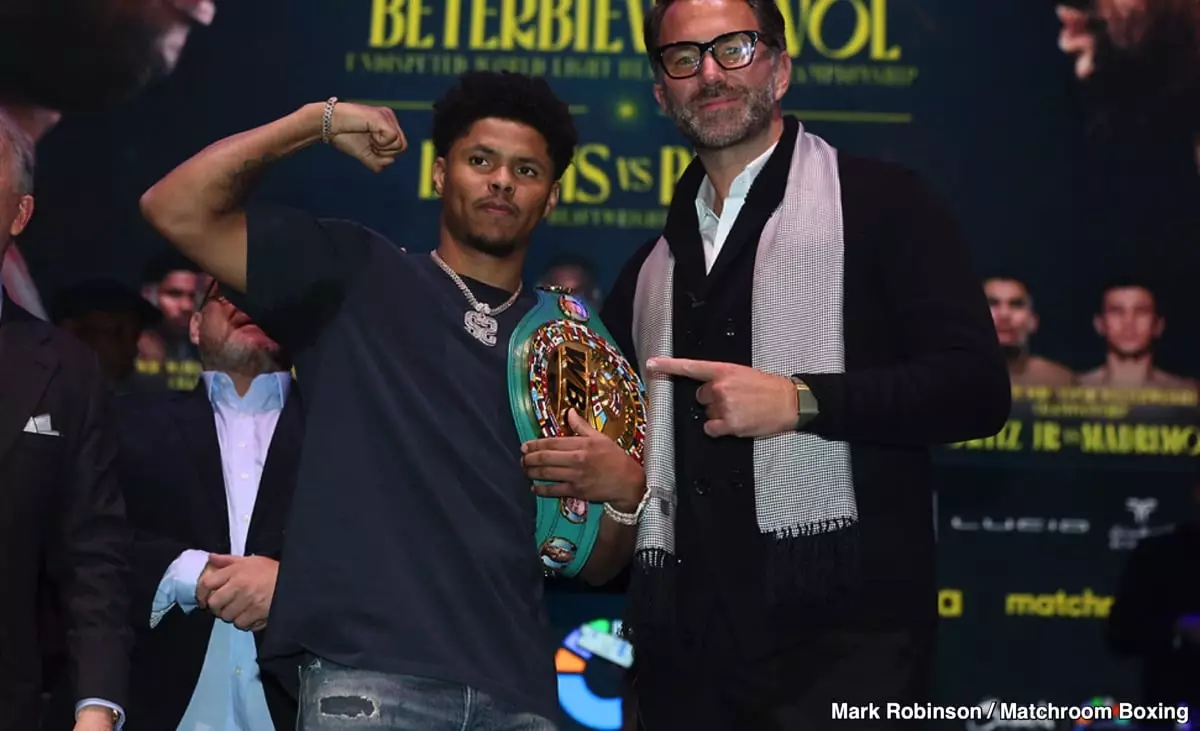Boxing, often hailed as the sweet science, is a tapestry woven from diverse styles, techniques, and strategies. As different fighters clash in the ring, their unique approaches to the sport evoke varied reactions from fans and commentators alike. Recently, Mikey Garcia, a former world champion and an astute analyst of boxing, expressed his thoughts on the styles of Shakur Stevenson and Gervonta “Tank” Davis. The opinions shared provide a fascinating glimpse into how differing perceptions of fighting styles can shape discussions within the boxing community.
Garcia’s commentary on Shakur Stevenson’s fighting style represents a broader sentiment echoed by many boxing enthusiasts. While he acknowledges Stevenson’s considerable talent—his skills, speed, and counter-punching—Garcia admits to a disinterest in the prospect of a showdown between Stevenson and Gervonta Davis. He perceives Stevenson’s style as less engaging, stating, “Shakur is going to fight his fight regardless of what the critics and fans want to see.” This statement underscores a divide between what is valued in boxing: the effective execution of technique versus the entertainment value of the match.
For Garcia, who has been a part of the pugilistic arena, the essence of boxing goes beyond just winning. As a fight fan, he craves excitement—dynamic exchanges, the thrill of aggression, and the unpredictability of an all-out brawl. In contrast, Stevenson seems focused on honing his craft and ensuring victory, sometimes at the expense of electrifying performances. Garcia’s criticism encapsulates a common struggle within the sport—a fighter may be technically excellent but fail to capture the audience’s admiration simply because his style is more methodical and calculated.
Stevenson has made headlines with his insistence on securing bouts with the biggest names in the sport, namely Davis and Vasily Lomachenko. His fervor for facing Tank Davis is evident in his repeated mentions of the matchup in promotional interviews for his upcoming title defense. However, Garcia challenges the viability of such a fight, suggesting that the lack of excitement in Stevenson’s bouts may hinder his aspirations. He states, “Until he transforms his style a bit and shows up a little bit more, then he’ll get some people excited.” Here, Garcia raises an essential point about the strategic interests of promoters and fighters alike when organizing matchups—entertaining fights are often prioritized because they draw bigger audiences.
This reflects the ongoing tension within combat sports: fighters are caught between the need to win and the imperative to entertain. For Stevenson, achieving the former seems paramount, but this focus may restrict his opportunities for high-profile bouts unless he adapts his approach in the ring.
Garcia draws a compelling comparison between Stevenson and other fighters like Lomachenko. He asserts that Lomachenko, despite having technical prowess, engages in fights with an aggressive flair that excites fans. This contrast amplifies the conversation about the qualities that make a fighter not just good but marketable. “I’d much rather see that fight than a Shakur Stevenson fight,” Garcia insists, inviting fans and experts to consider what makes a contest truly riveting.
Lomachenko’s bouts often involve more back-and-forth exchanges, which elicit a response from the audience. A fight against Davis is likely to be more captivating, as both fighters bring an aggressive mentality, creating a fertile ground for fireworks. Conversely, Garcia posits that Stevenson’s current style might not attract the same level of enthusiasm, potentially clouding future negotiations for high-stakes matchups.
Ultimately, the conversations surrounding Stevenson and Davis highlight issues of marketability within boxing. While Shakur Stevenson boasts a perfect record and undeniable skill, the question remains: can he evolve to meet the expectations of fans longing for excitement? If Turki Al-Sheikh, a key figure in boxing promotion, chooses to back a fight between Stevenson and Davis, it could materialize—however, audience engagement is a crucial factor in the success of such endeavors.
As the sport continues to evolve, these discussions spotlight a fundamental question for fighters: how do they balance their strategic inclinations with the crowd-pleasing aspect that keeps fans coming back? The challenge for Stevenson lies in embracing the duality of being a skilled technician and an entertaining figure within the ring. How he responds to this challenge may redefine not only his career but also future matchmaking paradigms in boxing.

